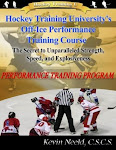
A well-structured volleyball training program can increase explosive power, vertical jump height, stamina and speed and agility around the court. Skill training alone, such as practising spikes, won't develop the physical traits necessary to play to the athlete's full potential.
Volleyball players have exceptional lower body power and perform well in the vertical jump test. Power in the legs is needed to jump explosively off the ground in order to spike, block, set and dive.
The repetitive nature of jumping movements makes power endurance an important outcome of training and the length of games and sets places a significant demand on strength endurance. Power and strength endurance are more important than aerobic endurance, although at elite levels, volleyball players have moderate to high values for aerobic power.
A well-designed volleyball training program will also help to reduce the incidence and severity of injury in volleyball players. Despite being a non-contact sport, a three study found that volleyball is the eighth most injury prone sport in the age group 14 to 20 years.
The articles below cover various volleyball training components useful to players at all levels. You will find sample programs for improving explosive power, your vertical jump and speed and agility - all specific to the game.
Volleyball players have exceptional lower body power and perform well in the vertical jump test. Power in the legs is needed to jump explosively off the ground in order to spike, block, set and dive.
The repetitive nature of jumping movements makes power endurance an important outcome of training and the length of games and sets places a significant demand on strength endurance. Power and strength endurance are more important than aerobic endurance, although at elite levels, volleyball players have moderate to high values for aerobic power.
A well-designed volleyball training program will also help to reduce the incidence and severity of injury in volleyball players. Despite being a non-contact sport, a three study found that volleyball is the eighth most injury prone sport in the age group 14 to 20 years.
The articles below cover various volleyball training components useful to players at all levels. You will find sample programs for improving explosive power, your vertical jump and speed and agility - all specific to the game.



























